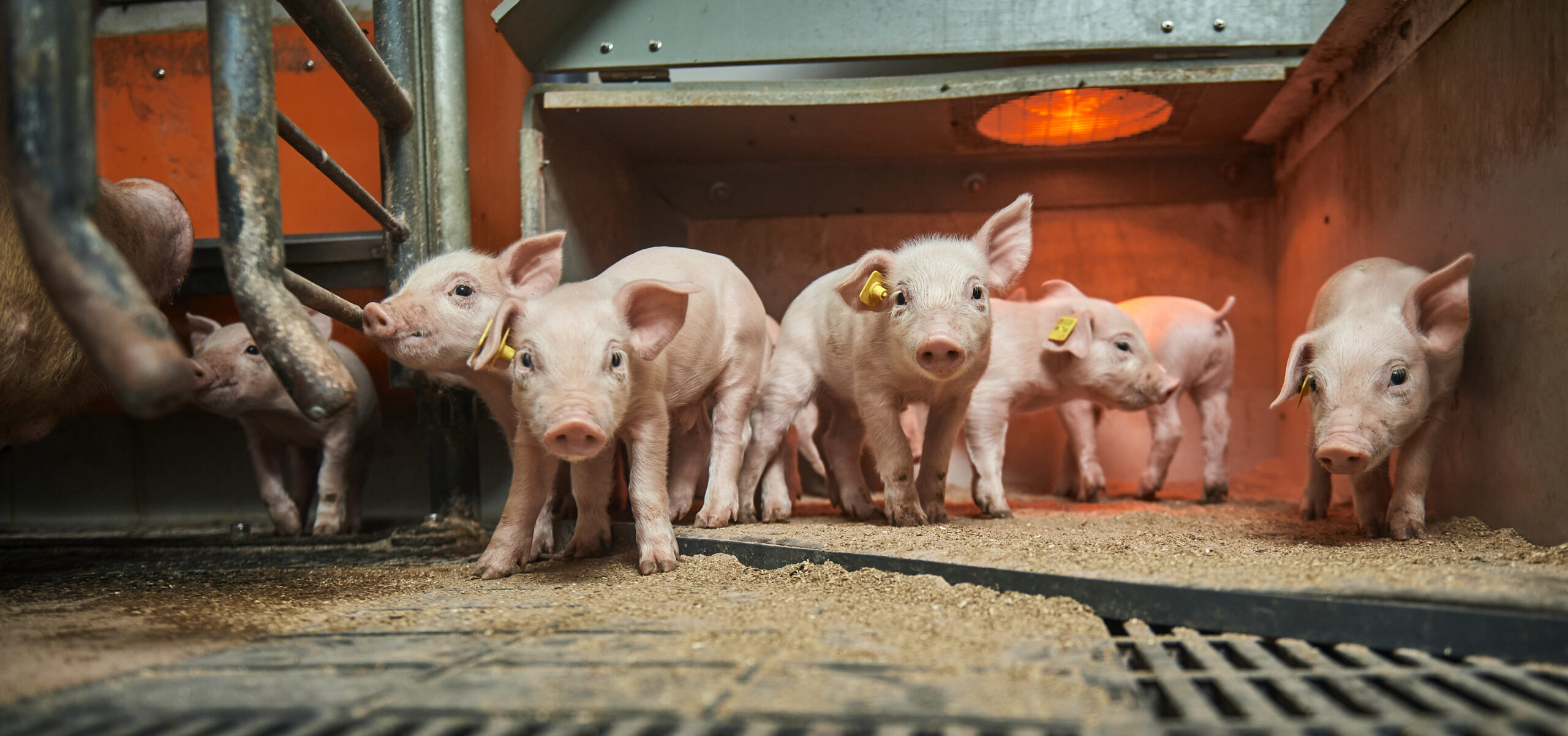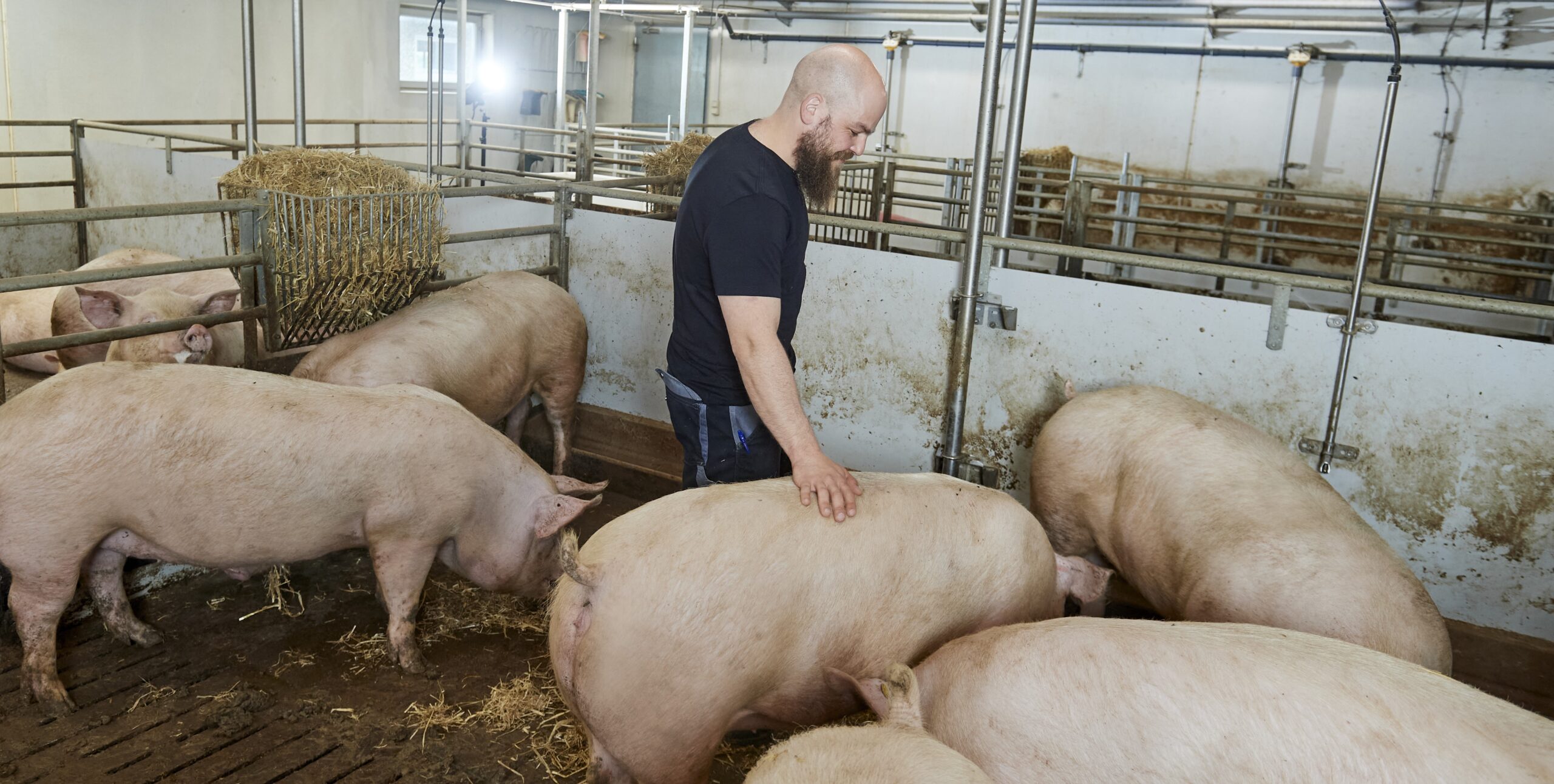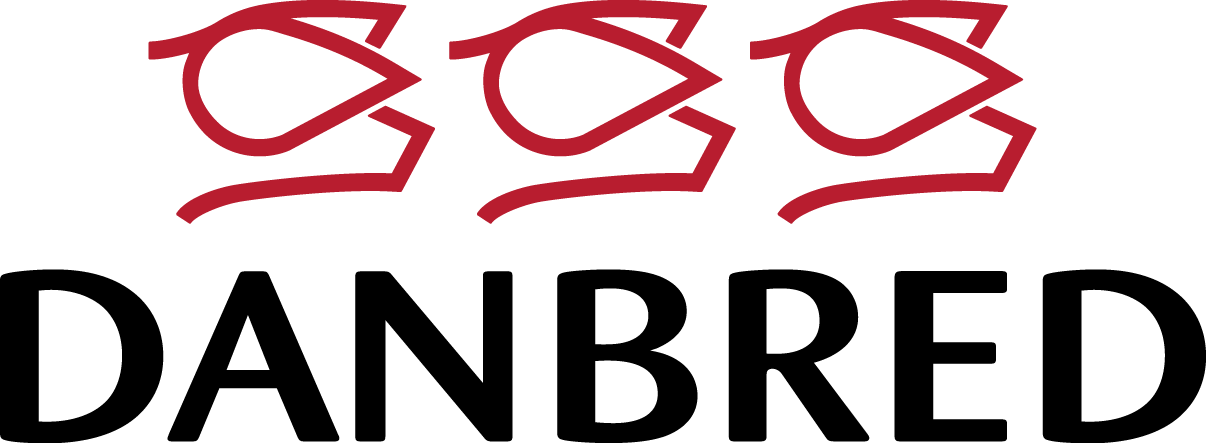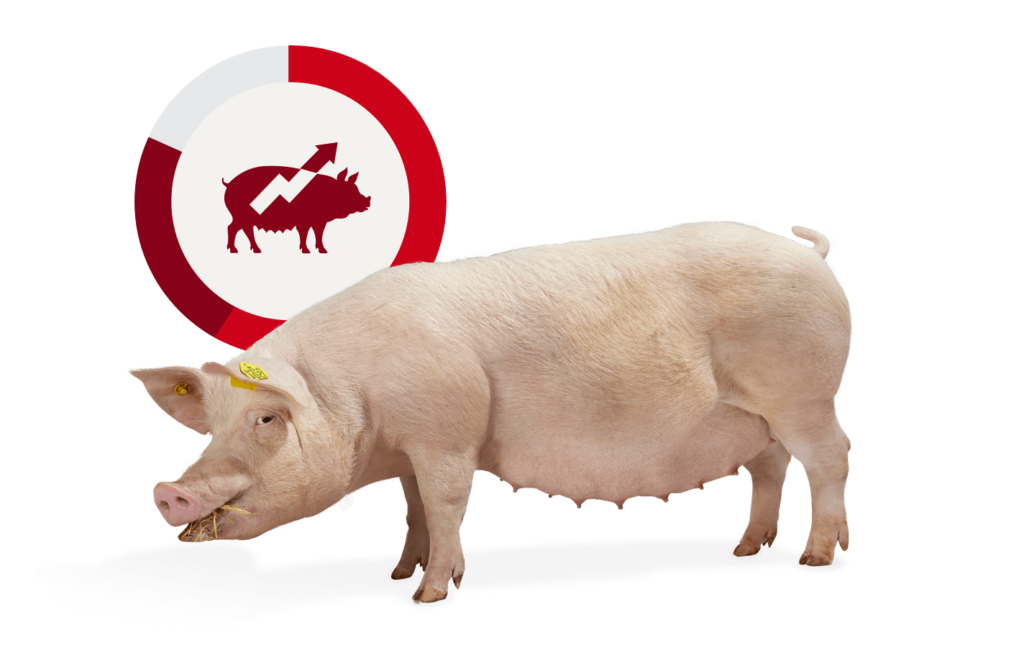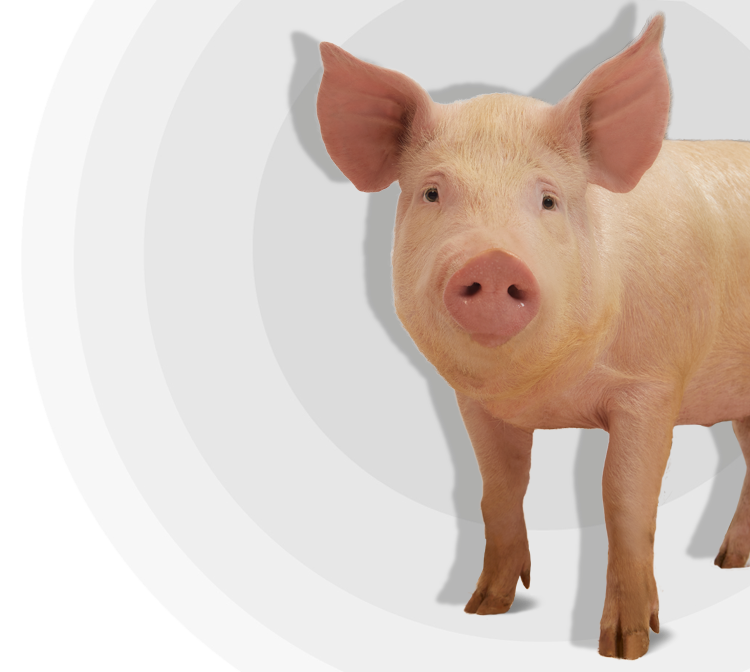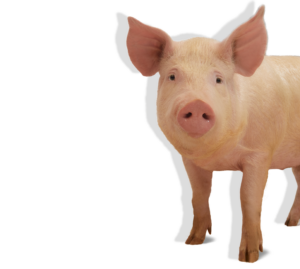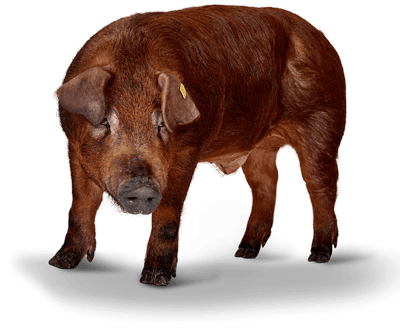Genetics is clearly part of the solution. Recent research shows that balanced pig breeding programmes have successfully increased litter size while simultaneously increasing piglet survival.
A recent research article, published in Frontiers, “Genetic and phenotypic time trends of litter size, piglet mortality, and birth weight in pigs”, proves that balanced breeding policies lead to improvements in both litter size and piglet survival. Despite misconceptions from the general public.
Litter size in pigs has increased steadily since 1990. Because of unfavourable genetic correlations with piglet mortality, breeding goals should include survival traits next to litter size.In DanBred’s breeding goals, we have two traits to ensure high piglet survival: the piglet’s own genetic potential to survive and the sow’s genetic potential to ensure that her piglets survive.Click here to learn more about DanBred’s breeding goals |
Genetics is part of the solution
With the continuous focus (and need) to improve productivity in pig production, genetics play an essential role. If a breeding programme only focused on litter size, the survival of piglets would decrease because of an unfavourable correlation between the two traits. However, with a balanced breeding programme, it is possible to improve both litter size and piglet survival, which also leads to an increase in number of weaned pigs per sow.
Selection for piglet survival works. Since the early 2000s, balanced pig breeding programmes have been successful in increasing litter size while simultaneously increasing the piglet survival rate. This is an ongoing process, and it is expected to improve over time with the introduction of novel technology and the continued leverage of increasing selection intensity.
Increases in litter size and piglet survival rates due to balanced breeding leads to a reduction in the size of the sow herd and in the related overhead costs, which improves the environmental footprint of a kg of pig meat.
CODE EFABARA breeding programme involves making breeding decisions based on a balanced and responsible combination of traits. As a commitment to responsible and balanced breeding, DanBred has adopted Code EFABAR; the code of good practices for animal breeding.EFFAB Animal Breeders are highly engaged in combining multiple traits for a more sustainable animal farming.Read more here |
Modern pig breeding strategies: balanced breeding
In the research article, the estimated genetic time trends of litter size, number of stillborn piglets, lactation mortality rate, and piglet birth weight are presented (Figure 1). The results prove that balanced breeding neutralises the negative correlations that litter size might otherwise have on piglet survival. This has been the reality in commercial pig breeding since 2002.
Figure 1
Genetic time trends of litter size (total number born), stillborn, lactation mortality rate, and piglet birth weight in the maternal lines from 2012 to 2022: Knap et al., (2023).
While number of total born piglets and birth weight has increased, the survival rates have also improved. This is due to successful balanced breeding.
The mortality has been almost halved in the last 20-year period while producing the same number of total weaned piglets. That means fewer sows can produce the same number of weaned piglets as earlier. A direct result of that is that the sow herds in most European countries have been reduced by 25 % since 2000. At the same time, the number of pigs slaughtered has increased by a similar proportion. Overall, the environmental footprint per kilogram of pig meat has been significantly reduced.
Selection for piglet survival works
The research article found the following genetic potential over a 9-year period:
- Total number born increased by 2.8 piglets per litter.
- Number of stillborn piglets was reduced by 0.53 piglets per litter.
- Lactation mortality rate was reduced by 7.1 %
- Potential for piglet birth weight increased by 0.27 kg.
The research also showed that the number of litters required to produce 1,000 weaned piglets decreased from 126 to 80, because litter size at weaning increased.
The total (farrowing and lactation) mortalities decreased from 451 to 248 and the percentage of these that were lactation mortalities (a much more important animal welfare issue than farrowing mortality) decreased from 41 % to 31 %.
Figure 2
Time trends of the number of litters required to produce 1,000 weaned piglets, and the associated numbers of dead piglets, based on the patterns of total number born, and farrowing and lactation mortality rate: Knap et al., (2023).
This research demonstrates that balanced breeding goals have led to both increasing litter sizes and piglet survival rates at the same time. Genetics play an important role in continuing to progress to improve productivity in pig production, while improving animal welfare and the environmental footprint of production. Genetics have been, is and will be a part of the solution for the future.
Read the full research article here.
DanBred is committed to secure the right balance of the traits in our breeding goals to ensure sustainable genetic progress that contributes to productivity and efficiency in pig productions worldwide.We emphasise the importance of strong, healthy piglets that are thriving, and these traits are genetically correlated to the number of weaned piglets. Vital piglets contribute to improved animal welfare as well as increased efficiency in your production.Click here to learn more about DanBred’s breeding goals |
How breeding for vital piglets has evolved in DanBred breeding programme:
|

